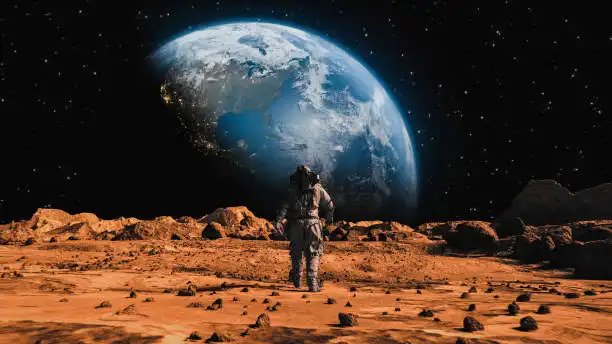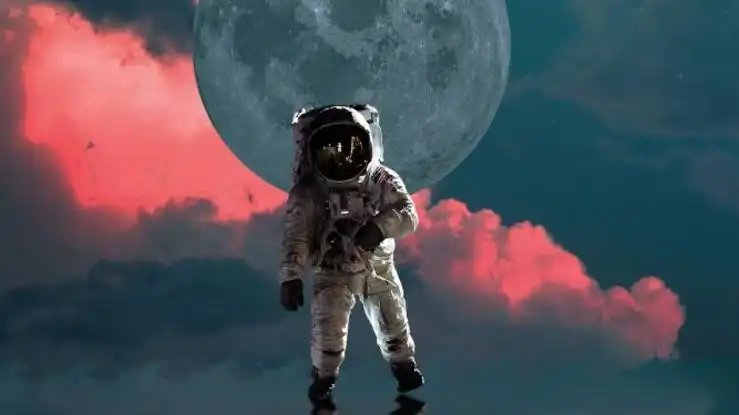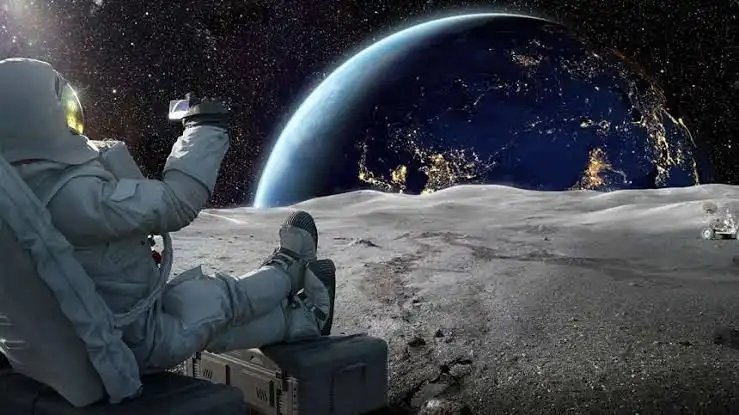Space exploration has always been a source of wonder and excitement for humanity.
From the first moon landing to the recent Mars rovers, we have made significant progress in understanding our place in the universe.
However, there is still so much to be discovered, and the future of space exploration is filled with limitless possibilities. In this article, we will explore some of the most exciting and innovative sci-fi ideas that could change the future of space exploration.

The NASA’s Innovative Advanced Concepts program just funded 14 new concepts that could affect the future of space exploration.
Colonizing Other Planets
One of the most talked-about possibilities in the world of space exploration is the colonization of other planets. With the discovery of many exoplanets in recent years, the possibility of finding a new home for humanity has become more tangible.
The idea of colonizing other planets is not just limited to science fiction, as private companies such as SpaceX are already working towards this goal. By creating self-sustaining colonies on other planets, we could ensure the survival of our species in the event of a catastrophic event on Earth.
##Interstellar Travel
Interstellar travel has long been a dream of humanity. With the development of faster-than-light travel, we could potentially explore the vast reaches of our galaxy and beyond. The concept of faster-than-light travel has been explored in various sci-fi movies and TV shows, but it is also a real possibility based on current scientific research. By developing new propulsion systems and technologies, we could potentially travel to other star systems within our lifetimes.
##Artificial Intelligence in Space Exploration
Artificial intelligence has already revolutionized many industries, and it has the potential to revolutionize space exploration as well. By incorporating AI into space missions, we could gather and analyze vast amounts of data in real-time, allowing us to make more informed decisions about our next steps. AI could also help us better navigate through dangerous environments, such as deep space, and even help us discover new life forms.
##Space Mining
Space mining is another exciting possibility for the future of space exploration. With the increasing demand for rare earth minerals and other valuable resources, the potential for space mining has become a hot topic. By mining resources in space, we could potentially avoid the environmental impact of mining on Earth and provide new materials for our growing technological needs.

Terraforming Other Planets
Terraforming, or the process of transforming a hostile environment into a hospitable one, is another exciting possibility in the world of space exploration. By terraforming other planets, we could potentially make them suitable for human habitation and even agriculture. This would greatly expand the number of potential homes for humanity, and open up new avenues for scientific discovery.
Beginning decades ago as ideas that seemed more like science fiction, these missions took years of research and testing to come to life.
Technological advances and scientific breakthroughs have transformed how we observe and investigate the cosmos. How will space exploration change in the coming decades, and what new possibilities will emerge?
These questions are at the heart of NASA’s Innovative Advanced Concepts program, or NIAC, which awards funding for concepts that could be part of future missions.
“NASA dares to make the impossible possible,” NASA Administrator Bill Nelson said in a statement. “That’s only achievable because of the innovators, thinkers, and doers who are helping us imagine and prepare for the future of space exploration. The NIAC program helps give these forward-thinking scientists and engineers the tools and support they need to spur technology that will enable future NASA missions.”
The lastest NIAC competition selected 14 new concepts, awarding each $175,000 in January. Now, these researchers have nine months to use that funding toward refining and testing their ideas to see whether they can advance to the second phase of funding, which is $600,000 to flesh out their concepts and bring them closer to reality.
Only five projects have made it to the third phase during the NIAC program — $2 million to make something implementable.

Active since 2011, the competitive program is open to a broad range of ideas as long as they are technically credible, said Michael LaPointe, program executive for NIAC at NASA.
Some of the latest NIAC-funded concepts include a fluid space telescope, self-growing bricks intended for Mars and a plane that could fly on Saturn’s moon Titan, among others. Many of the ideas are the result of creative collaborations between experts in different fields challenging one another to come up with new ideas.
“It really is a community of innovators,” LaPointe said. “We’re looking for ideas that will enable brand-new ways of doing things.”
Self-growing bricks for Mars
For the past few years, Congrui Jin and her research group have used bacteria and fungi to heal cracks in concrete. Jin, an assistant professor at the University of Nebraska-Lincoln, now wants to take her idea to space. Her self-growing bricks could one day build habitats and other structures for human explorers on the red planet.

The concept would involve sending bacterial and fungal spores and a bioreactor to Mars. The bioreactor is needed for the microbes to survive because Mars’ natural environment would be too harsh for them. But Mars would provide the rest of the necessary ingredients for the self-growing bricks, including dust and soil, sunlight, nitrogen, carbon dioxide and water from melted ice.
In turn, the bacteria can produce oxygen and organic carbon to support the fungi. The process, once all of these ingredients are inside the bioreactor, would also create calcium carbonate to serve as the glue.
The bacteria, fungi and minerals will bind Martian soil together to form blocks, which can later be used to make floors, walls and even furniture.

Jin’s group, which includes some students, screens the most suitable types of fungi and bacteria and tests which ones work best together. The team is also building a bioreactor to calibrate the atmosphere, pressure, temperature and illumination required to grow the bricks.
“The very important feature of this technology is its autonomous nature, and it doesn’t require any human intervention,” Jin said. “We initially just need to provide small quantities of spores to start this process, and the rest is automatic.”
Flying TitanAir
Saturn’s moon Titan has long intrigued astronomers with its thick atmosphere and lakes and rivers of methane. It’s a unique place in our solar system in which chemistry that’s taking place may be similar to what occurred on early Earth. A rover-size drone called Dragonfly is expected to launch for this moon in 2027 to study its fine-grained, drier organic material.
Quinn Morley, principal investigator at Planet Enterprises in Gig Harbor, Washington, and his collaborators at Washington State University and other institutions envision a complementary Titan mission to explore the wetter regions of the intriguing moon. The seaplane-like design, called TitanAir, would soar through Titan’s atmosphere and sail on its lakes.

TitanAir could reach the moon about a decade after Dragonfly “to help unlock key secrets of this alien planet,” Morley said.
The front section of the plane’s wing would “drink” liquid methane that forms on the wing’s surface as the plane flies through rain clouds. The liquid collected inside the wing could be analyzed by instruments and transmitted back to Earth.
A small rover or helicopter could fly to places the plane can’t reach and return samples to the plane. Beginning in the fall, Morley wants to partner with engineering student design teams at Washington State on ideas for TitanAir.
“The analysis of clouds, lakes, and shorelines allows us to attack the search for life in three unique ways with one spacecraft,” Morley said in an email, “increasing our chances of unlocking these profound mysteries.”
Fluid telescope
Large space observatories such as the Hubble Space Telescope and Webb telescope are the result of decades of funding, design, assembly and testing. But there is a growing demand for a wider range of telescopes that can be developed cheaper and more quickly.
Several new NIAC concepts offer diverse ways of observing the cosmos like never before.
One design is FLUTE, or the Fluidic Telescope, from Edward Balaban, a research scientist at NASA’s Ames Research Center in California, and his collaborators. Balaban has mostly worked in artificial intelligence and strategic planning for the upcoming VIPER lunar rover mission.

Balaban was inspired through conversations with colleagues both at Ames and the Technion-Israel Institute of Technology to develop a concept that could combine manipulating fluids with on-orbit assembly of a large telescope. The latter wouldn’t be limited by the size of its launch vehicle.
Under the plan, two launches would send an instrumentation spacecraft and a frame that can be filled with liquid into space. The liquid-filled frame creates a massive 50-meter (164-foot) mirror, while the instrumentation spacecraft will remain at a specific distance from the mirror to collect images and send them back to Earth, Balaban said
Balaban and his team are testing liquids that could act as the mirror, including ionic liquids called molten salts. Researchers will use their grant to work on constructing a frame to hold the liquid and the design for the instrumentation spacecraft. Such a telescope could be impervious to the micrometeoroid strikes that the Webb telescope has experienced because the liquids wouldn’t be affected, he said.
A large light-collecting surface such as FLUTE could glimpse the faint light of early galaxies or look inside the atmospheres of exoplanets.
“Believe it or not, we might be able to start seeing surface features on the nearest exoplanets,” Balaban said. “Instead of seeing them as pinpoints of light, we might be able to tell if they have continents, for example.”
Searching for another Earth
Meanwhile, Heidi Jo Newberg, a professor of physics, applied physics, and astronomy at Rensselaer Polytechnic Institute, and her collaborators have a concept for a telescope that could find “Earth 2.0.”
The team’s idea is to search for nearby habitable planets by changing up the centuries-old design for telescopes. It’s called DICER, or a Diffractive Interfero Coronagraph Exoplanet Resolver.
Earth-size exoplanets are small and faint, especially compared with the bright stars they orbit, so conventional thinking suggests that searching for such planets would require a telescope with three times the diameter of the Webb telescope — which at 6.5 meters (21 feet 4 inches) is the largest mirror ever flown in space.
A 20-meter (65-foot) telescope currently isn’t feasible because it would be difficult to launch such a large mirror into space.

But DICER would rely on two small mirrors as well as two 10-meter diffraction gratings, or optical components that diffract light, that can be easily packed up inside a rocket. Think about the rainbow visible on the back of a CD when you hold it up to the light — that’s diffraction grating. The gratings could collect the same amount of light as a 20-meter telescope.
“This idea brings down the size and the weight of what you have to send up into space to get the desired high resolution of a telescope like Webb,” Newberg said. “What we’re trying to do is exploit this out-of-the-box design to make it possible to find Earth-like planets.”
The team will work on the scale of the optics and determine whether the telescope could also be used to study exoplanet atmospheres.
The invisible sky
Despite advances in the types of light telescopes can see, low-frequency radio waves remain invisible to us.
Dr. Mary Knapp, a research scientist at the Massachusetts Institute of Technology’s Haystack Observatory, and her collaborators are working on a concept that could reveal this part of the radio wave spectrum. The waves are unobservable by ground-based radio telescopes due to the distorting effects of Earth’s upper atmosphere.
“I learned back in my undergrad days that there was this part of the spectrum we couldn’t see,” Knapp said. “It really just struck me that there was this unexplored part of the universe, and I want to explore this part of the sky for the first time.”

The Great Observatory for Long Wavelengths, or GO-LoW, would rely on a fleet of thousands of shoebox-size satellites that act in concert, like one large virtual telescope. Small satellites are cost-effective, and mega-constellations of them can be launched at once on a single, large rocket.
The observatory could measure low-frequency electromagnetic radiation, which would carry a wealth of data for astronomers who want to observe the oldest stars and galaxies and understand the magnetic fields of exoplanets and stars. This information can help scientists more easily spot habitable planets. Magnetic fields help planets maintain their atmospheres.
The team will focus next on the antenna design for the satellites and the potential architecture needed for the satellites in space. If GO-LoW is developed, it could be used to create a new map of the sky.
“Anytime we look at the universe in a new part of the spectrum, we’ve seen things we didn’t expect,” Knapp said. “I’m really excited about what we don’t know.”

Conclusion
Space exploration is one of the most exciting and promising fields of study for humanity. With the advancements in technology and science, the future of space exploration is full of limitless possibilities. From colonizing other planets to terraforming hostile environments, the potential for discovery and growth is enormous. The ideas discussed in this article are just the tip of the iceberg, and we are sure to see many more innovative and groundbreaking ideas in the future.
Source –


















